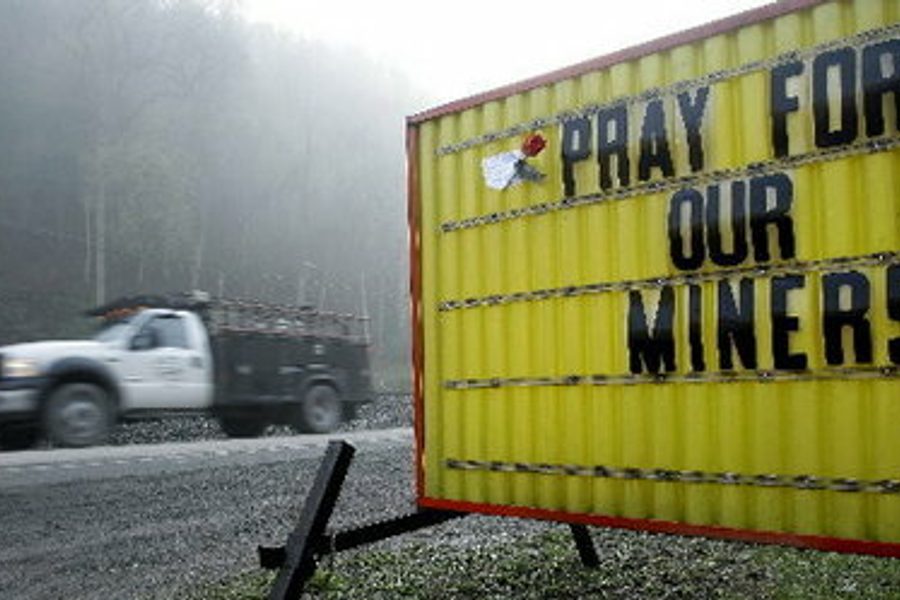
Following the news that U.S. mining fatalities increased dramatically in 2010, the Department of Labor announced on Monday a new rule designed to tighten regulation procedures.
The Mine Safety and Health Administration is seeking changes that would improve the agency’s ability to better identify and shut down mines with a history of safety and health violations. The change comes after a year in which the agency faced criticism for its oversight procedures following several high-profile mining disasters.
The MSHA is looking to make revisions on its enforcement rules regarding mines with a pattern of violations (POV). “As I’ve said many times before, the current POV system is broken, and this regulation is the next critical step in reforming the enforcement program under the existing statute,” said Joseph A. Main, assistant secretary of labor for mine safety and health.
The changes are welcome after mining disasters made national headlines last year, including the 29 Massey Energy workers who lost their lives at the non-unionized Upper Big Branch mine in West Virginia. The MHSA came under fire following the mine explosion, the worst since 1970.
The agency’s own preliminary reports last month concluded that the explosion was in fact preventable. Many have wondered how Massey Energy could ratchet up more than 500 citations from the MSHA for violations and still continue to operate.
Over at Mother Jones, Kate Sheppard says heavy industry lobbying in 1989 watered down the MSHA guidelines. Indeed, Congress enacted the Federal Mine Safety and Health Act of 1977, including the POV provision designed to address operators who continually comprised safety standards.
But the regulatory provision has never been used in the three decades since the law has been in place. That will ostensibly change with the new regulatory proposal. “This proposed rule is designed to meet Congress’ intent,” Main said.
The new initiative looks to be a response to prevent more fatalities in the future. While 2009 recorded the fewest deaths on record (34), there was a big uptick last year with 71 mining deaths, including the Massey Energy workers.
Under the new changes, for the first time,
- The agency would be allowed to shut down operators who are placed on the POV until the safety standards are brought up to code. The workers and mines will not be allowed open until an inspection concludes that there are no violations.
- Another proposal would allow the MSHA to use unfinalized citations to evaluate an operator’s labor standards. Previous regulations required final orders, causing operators to contest violations in order to stall the compliance reviews.
- Other provisions are aimed at cutting red tape. The MSHA now has the authority to screen operators who have a pattern of violations without written notification. By eliminating the paperwork, compliance checks for problem mines will also increase from annually to bi-annually. The agency has narrowed the criteria for screening dangerous mining sites and has proposed creating an online database, which operators would use to check for compliance.
It isn’t clear whether unions are supportive of the new MHSA measures. The United Mine Workers of America provided a lukewarm response to the Wall Street Journal since it wasn’t in writing yet. “To become something that is followed — something that saves lives — they have to be enforced,” said UMWA International President Cecil E. Roberts.
Stronger legislation may need to be enacted to aid the MHSA efforts. Senator Jay Rockefeller (D-WV), who applauded the proposed changes, is working on a bill that would modify the MHSA measures. He says:
The “pattern of violations” system was intended to be an important tool to address mines with recurring safety problems. Unfortunately, this tool has not been effectively utilized under current law and regulations. In addition, the harshly punitive nature of the current system does not serve the goal of helping unsafe mines improve their performance and return to operations safely.
Instead, Sen. Rockefeller is hoping to change the standards from punitive to ones that promote safety benchmarks in order to push operators towards compliance. The big question is if it will be able to pass through the Republican-led Congress.







